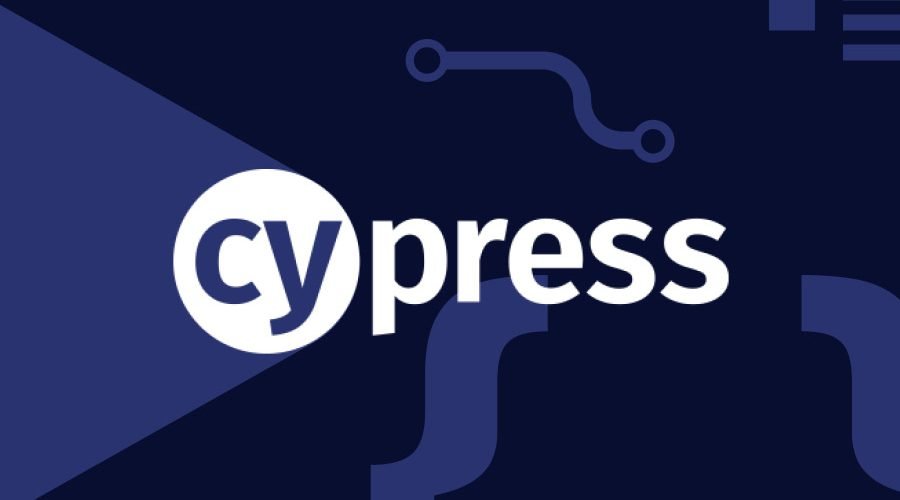Cypress is an end-to-end testing framework for web applications. It is a JavaScript-based framework that is used for automating browser actions, simulating user interactions, and asserting that the application behaves as expected. Cypress is designed to make it easy to set up, write, run, and debug tests for web applications, and it can run tests directly in the browser, making it faster and more reliable than traditional end-to-end testing tools.
Table of Contents
Cypress Test Automation. What is it?
Cypress is a Node.js-based test automation framework for web applications. It uses JavaScript as a programming language, and it supports a wide range of test types, including unit tests, integration tests, end-to-end tests, and API tests. Cypress also has a number of built-in functionalities that make it easy to use, such as screen capture, video recording, time travel, and easy debugging. It also supports cross-browser testing on Edge, Firefox, and Chrome.
Furthermore, Cypress also comes with Mocha and Chai as the default assertion libraries, which gives testers the flexibility to use the assertion libraries of their choice, as well as the ability to use Mocha reporters or Spec reporters in their specs, which allows for detailed reporting during tests.
Let us have a look at the ways to improve your Cypress tests.
1. Using commands:
It is a great tip when working with Cypress. Cypress comes with a variety of built-in commands, such as visit(), get(), click(), type(), and clear(), among others, that allow you to perform common tasks like visiting a website, interacting with elements on the page, and asserting that the expected behavior occurs.
One powerful feature of Cypress is the ability to create custom commands, which allow you to encapsulate commonly used functionality and reuse it across multiple tests. You can create custom commands by chaining them together with Cypress’ existing commands. This improves the readability of your test code and saves you time by eliminating the need to repeat actions.
You can also override existing commands in Cypress, which allows you to modify the behavior of built-in commands to better suit your needs. This flexibility gives you the power to customize Cypress to fit the specific requirements of your project.
Overall, using commands can help make your Cypress tests more efficient, readable, and maintainable, and it’s a best practice to use them whenever possible.
2. Consider including Cypress in your CI/CD
Although a little more challenging to apply, this one is worthwhile. Spend some time reading and comprehending how Cypress can be integrated with your CI/CD process. Cypress provides substantial documentation in this area, as with everything else. As your test suite expands, moving the suite’s execution to a different system might be more efficient than running every test locally on your laptop.
3. Run specific tests
Cypress’s cypress-grep plugin allows you to run specific tests by searching for their titles or custom tags. This can be useful for running only the necessary smoke or feature-specific tests rather than all the tests in your test suite. To use the plugin, you will first need to install it, and then use the –grep or -g command-line flag to specify the title or tag of the tests you want to run. For example, cypress run –grep “smoke” would run all tests with the title or tag “smoke.”
4. Command Console
Cypress provides a range of debugging tools to help developers identify and fix issues with their test code. One of the most powerful of these is the Command Console, which allows developers to interact with the browser and the application under test in real time. This can be used to observe application messages, determine element locator information, and traverse error stack traces, among other things.
Developers can also use Cypress’s built-in debugging commands, such as cy.debug() and cy.pause(), to pause the test execution and inspect the state of the application and the browser. Furthermore, Cypress also allows developers to take screenshots of the application at any point during the test execution, which can be helpful in identifying issues with the application’s UI.
Overall, Cypress’s debugging capabilities make it a powerful tool for identifying and fixing issues with test code, helping to ensure the stability and reliability of the tests.
5. Continuous Integration Services
Cypress is a cross-platform, end-to-end testing tool that can be run on any operating system, including Mac, Linux, and Windows. The installation process is straightforward and can be done using standard npm or yarn commands. Cypress also provides a range of pre-built Docker images that can be used to run tests on most CI systems.
One of the benefits of using Cypress on CI is that it automatically saves a video of the entire test run, including the browser window, test commands, and application. This video can be used to quickly debug any failing tests. In addition, Cypress also automatically saves a screenshot of each failing test at the moment of failure, providing additional help in debugging CI failures.
While Cypress can be run on most CI services, there are several CI services that offer additional tight integration with Cypress Test Runner. CircleCI, GitHub Actions, and Netlify Build have Cypress-specific modules that the Cypress team maintains that allow correctly configuring Cypress installation, caching, and running on those providers with minimal configuration. This can save time and effort for developers and ensure that the tests run correctly on the CI.
6. Scalability and Cross-Platform Testing in the Cloud
Cypress is an open platform, enabling other cloud vendors, such as Cypress.io and Perfecto, to increase the testing coverage and execution speed. It functions via a newly modernized SDK that packs, uploads, and runs the Cypress tests (JavaScript, TypeScript, Cucumber, and JavaScript) in the cloud across platforms and locations as specified by the developers in a JSON configuration file.
Along with the size and capacity to maximize parallel testing across an infinite number of browsers, one advantage of this integration is that it enables teams to agnostically stay up to date with all current and beta versions of each browser as they are being introduced to the market.
A cloud-based exploratory and automation testing platform like LambdaTest allows you to perform cross-browser testing of web applications. It allows you to run Cypress tests on a variety of different browsers, operating systems, and devices, which can help to improve the overall quality and reliability of your tests.
LambdaTest also provides a variety of additional features, such as screenshot testing, network throttling, and real-time testing, which can further improve the reliability and accuracy of your Cypress tests. Additionally, it also provides a debugging feature to debug the code in real-time, so you can easily identify and fix any issues that may arise.
7. Cypress’s Visual Testing Across Browsers
The appearance and feel of the app on many platforms, screens with varied sizes and resolutions, and technologies is an additional and crucial component of web application testing, particularly in the age of digitization. In addition to integrating with tools like Applitools, Happo.io, and others for visual testing at scale, Cypress can carry out a variety of visual tests using screenshots and other methods.
Teams can take various screenshots of the web app’s DOM using the eyes technology in the Applitools SDK and compare them to other virtual platforms to find visual and functional bugs in the app.
8. Cypress is used to testing network control and periodic network requests
You may verify the program is making the anticipated network calls by conducting E2E tests. The developers can even execute the front end without the back end or with only select calls stubbed thanks to Cypress’ complete network spying and mimicking capabilities. The Command Log displays the intercepted or observed HTTP network calls, and the test can make assertions against the calls to validate the request and response data.
9. Using data-* attributes
It is a best practice for writing robust and resilient tests. These attributes allow you to target elements based on custom data rather than relying on CSS attributes, which can change easily and break your tests. This is especially important when working with Cypress, as it allows you to target elements in a more stable and predictable way, which in turn helps you create more reliable and maintainable tests.
It’s worth mentioning that Cypress allows you to easily access these custom data attributes using the data() method, which allows you to retrieve the value of a data-* attribute on an element.
10. Using helper functions
It allows you to reduce boilerplate code, and make your tests more readable and maintainable. Helper functions can be used for a variety of tasks, such as:
- abstracting repetitive tasks into a single function call
- encapsulating complex logic in a single place
- making the test code more readable by breaking it down into smaller, more manageable chunks
- reusing the same functionality across multiple test cases
This is a common practice in software development; by creating helper functions, you are not only making your code more maintainable and readable but also making it more reusable and more efficient. Cypress allows you to create and use custom helper functions in your tests, so you can improve the organization of your test code and make it more maintainable over time.
Conclusion
It is important to understand that, like any technology, Cypress has its limitations and tradeoffs. Some of these may be temporary, such as Safari browser support, while others may be permanent, such as multi-tab automation support. However, the Cypress team is actively working on releasing new versions with new capabilities.
They are currently focused on a component testing feature that allows for testing of React and Vue components in isolation, using a real browser for visualization, which can improve the testing and debugging process.
With a cloud-based testing platform like LambdaTest, you can run Cypress tests on a wide range of browsers, including the latest versions of Chrome, Firefox, Safari, and Edge, as well as older versions, and on various operating systems like Windows, Mac, and Linux.
This allows you to ensure that your web application works correctly across different browsers and operating systems and that your Cypress tests are able to detect and report any issues that may arise.





